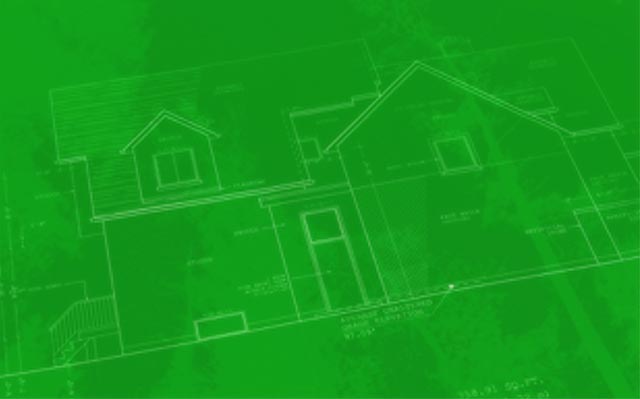Why America is Embracing Passive House Architecture
What’s good for the environment is also good for a homeowners’ health and bottom line

When considering Passive House architecture for a new build, don’t be fooled by its name. This groundbreaking concept is actually quite aggressive in its benefits to the environment and human health, as well as savings to a homeowners’ bottom line.
In a nutshell, Passive Houses are very well-sealed buildings that use minimal energy for heating and cooling, while still maintaining the highest level of comfort. They are “passive” because they do not need to actively use energy to keep temperature consistent. Instead, their unique blend of airtight construction and super insulation is so energy efficient that some estimates report that heating and cooling can be run on the same amount of power it takes to operate two hand-held hair dryers – about 90 percent less energy usage than traditional homes. Strategically-placed windows also allow maximum amounts of daylight to reduce the need to turn on artificial lights.
Significantly less energy use leads to significantly less carbon emissions and consumption of fossil fuels. And as demand for green construction skyrockets, a growing number of architects are turning to Passive House design to meet their clients’ needs. About 60,000 Passive Houses have popped up around the world in recent years, and an entire neighborhood is under construction in Germany, where the concept was created, reports Passipedia: The Passive House Resource. In the U.S., Passive House projects total more than 1.1 million square feet, according to the Passive House Institute US, with about 150 structures currently in use.
That number is expected to steadily increase as more and more architects become trained on the rigorous standards required to achieve Passive House certification, and as eco-conscious consumers demand ways to reduce their energy footprint. With the U.S. Green Building Council blaming buildings for nearly half the greenhouse gas emissions nationwide, Interesting Engineering, a Web site aimed at the science, technology and engineering industries, ranked Passive House design as one of the Top 5 Green Global Building Trends of 2017.
Although created for homes, Passive House design has expanded to include larger projects such as multi-family apartment buildings and commercial structures.
“Most people look at vehicles on the road and factories billowing smoke, yet do not think that what they do in their own homes has a significant impact; well, it does,” writes Freshome , an online interior design and architecture magazine. “It’s glaringly obvious that there is going to be a bigger push in the future for homes which are far more efficient and conserve energy.”
Environmental benefits and cost savings sound great. But what exactly does this mean for my project?
Passive House design conserves energy by constructing an airtight, highly insulated building that uses the sun and heat radiating off people and equipment to create the right indoor environment. It accomplishes this feat by implementing:
- Super insulation – Walls are generally two or three times thicker than standard construction projects. In temperate areas such as the Pacific Northwest, insulation may average between 12 and 14 inches, but colder climates such as Minnesota may reach 18 inches to achieve that perfect balance. Residents of Passive Houses say all this insulation leads to less noise filtering into their homes as well.
- High-performance doors and windows – Almost always the culprits for cold drafts and room-to-room temperature variations in a home, the use of high-performance windows and doors is vital to the success of a Passive House. Windows, which are usually triple-glazed, must meet stringent standards regarding insulation, air tightness, and solar heat gain values. Thoughtful placement and impeccable installation is also key in this type of construction.
- Synergies with the sun - Computer software performs careful analysis of an area’s annual weather data to help create a Passive House design. It is important that buildings are aligned relative to the sun to create the maximum or minimum heat gain, depending upon the local climate. Window sizes and orientation are also meticulously planned for energy balance, as well as to create natural lighting.
- Airtight structure – Exacting procedures such as blower door testing must be performed to ensure that buildings exhibit the industry-leading leakage control necessary for Passive House certification. Special fog machines and infrared cameras are often used during construction to find the tiniest air leaks. Wall seams are treated with special tapes, gaskets and sealants to ensure they don’t fail over time and cause drafts.
If everything is sealed so tight, won’t that lead to mold and poor air quality?
Not at all. In fact, a New York Times article about a Passive House in Seattle, Wash., reported, “The air inside the house feels so fresh, you can almost taste its sweetness.” Passive House designers are carefully trained to identify and address potential moisture issues to prevent mold. Projects incorporate strong vapor barriers and constant, low-level ventilation to ensure a healthy building.
But the true star of a Passive House is its heat-recovery ventilator (HRV) system, which acts like lungs to exchange stale indoor air for fresh air from the outside. This is where the energy-saving magic happens: HRVs use the home’s warm outgoing air to heat the incoming cold air in the winter by causing the warm exhaust to pass over coils or channels that contain the fresh air. The opposite occurs in the summer. In high-humidity climates, Passive Houses may use an energy-recovery ventilator (ERV) system instead that also strips moisture from the incoming air. Since Passive Houses require barely any energy to maintain an optimal temperature, their environment is almost immune to power outages that usually cause discomfort in the winter and summer.
There are also many health benefits to breathing fresh air indoors. Filters added to the HRVs and ERVs significantly reduce allergens and other pollutants that leak into less airtight homes. The constant flow of fresh air and careful ventilation of Passive Houses also combat the too-high levels of carbon dioxide that can affect indoor air quality. Researchers at the University of California Berkeley recently found that carbon dioxide can impair how well people think and work even at the low levels typically found in public school classrooms, crowded conference rooms, cars and planes.
All these benefits must come with a hefty price tag?
Passive House buildings typically cost about five to ten percent more than standard construction, with larger structures showing the smallest differences, according to research by the Passive House Institute US. Industry experts expect the gap to narrow as more large-scale window and door manufacturers introduce high-performance products. But proponents of this green design say the long-term savings far outweigh the initial costs.
Besides the bottom line benefits offered by 90 percent reductions in energy usage, many homeowners can take advantage of special loans earmarked for energy-efficient home projects. The high-quality construction materials required to achieve Passive House certification also translate into long-term savings because they are less likely to break down and require repair or replacement over time. Even Habitat for Humanity has turned to Passive House design to lower the costs of home ownership for its recipients.
The percentage of companies with more than 60 percent of their building projects certified as green is on track to more than double since 2015, from 18 to 37 percent, according to the World Green Building Trends study. The environmental and health benefits of Passive House architecture, combined with the significant cost savings of reduced energy consumption, are proving that there is no better place to start going green than at home.
< Back



